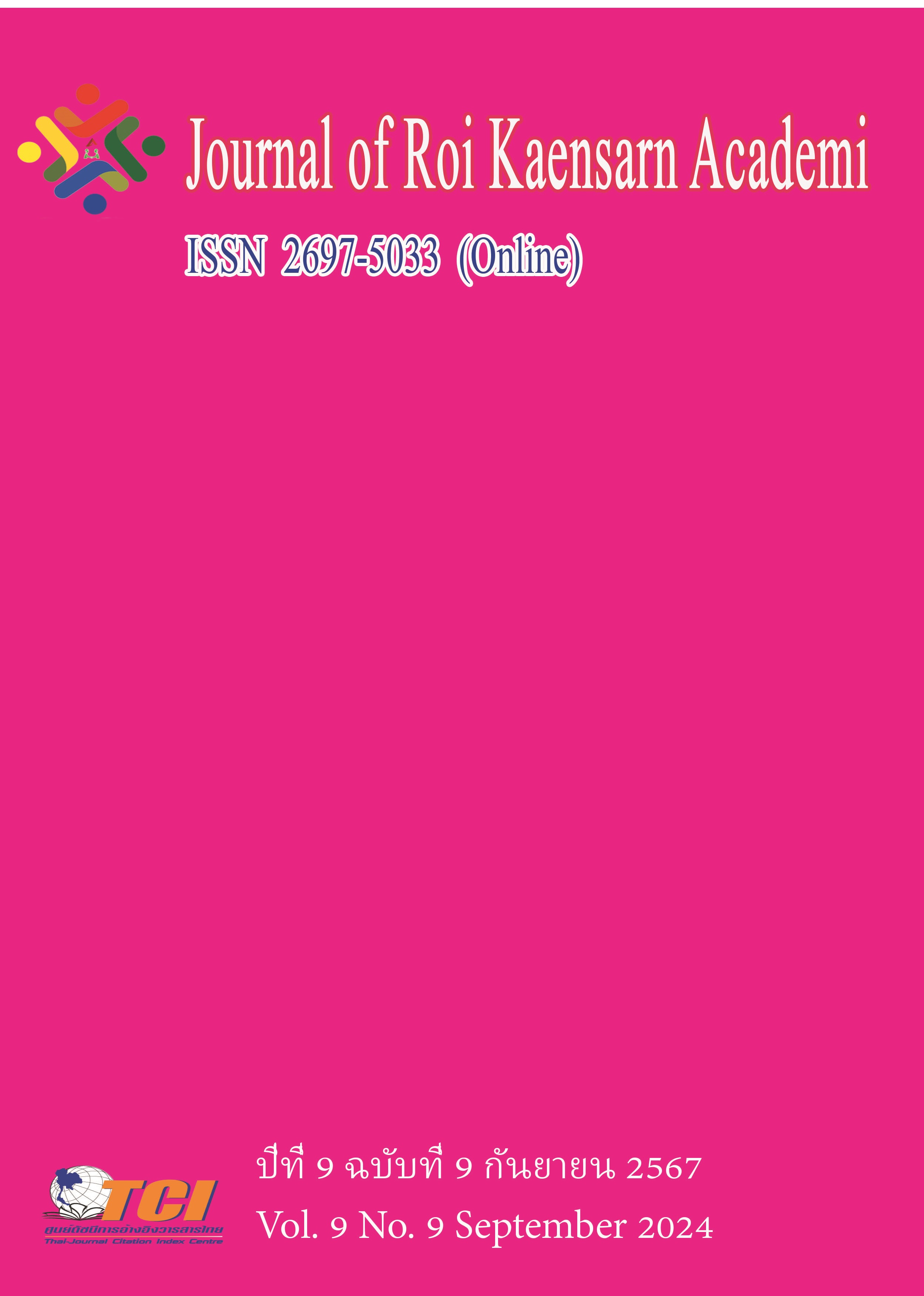The Study of Economic and Environmental Benefits of Distributed Photovoltaic Power Generation Projects in Southern Zhejiang Province on Take the 8 Projects of Pingyang Aipu photovoltaic Power Generation Co., Ltd
Main Article Content
บทคัดย่อ
The objectives of this research were 1) to evaluate the economic benefits of distributed photovoltaic (PV) power generation projects, 2) to assess environmental benefits, and 3) to analyze factors influencing power generation capacity and initial investment. The sample consisted of eight distributed PV power plants operated by Pingyang Aipu Photovoltaic Power Generation Co., Ltd. in Pingyang County, Zhejiang Province, selected based on varying capacities and installation methods. Data collection tools included operational data from 2019, such as electricity generation, grid power, self-use electricity, investment amounts, and revenue details. Data analysis methods included descriptive statistics and calculations of payback periods, internal rates of return, and emission reduction effects.
The research results were as follows: 1) The PV systems' average full-load power generation time in the first year was 954 hours, with an internal rate of return of 12.07% and a payback period of 7.73 years, indicating good economic benefits; 2) The energy payback period was 6.1 years, and the projects could save 19,767,413.75 kg of standard coal over 20 years, demonstrating significant environmental benefits; 3) Provincial subsidies accounted for 15.08% of total revenue, grid electricity tariffs for 12.56%, and enterprise self-use electricity for 72.36%. It is recommended to monitor national policy adjustments and their impact on the economic efficiency of photovoltaic projects, study the development of the photovoltaic industry under different international policies, and investigate the investment value of photovoltaic power stations in regions with varying solar radiation conditions.
Article Details
เอกสารอ้างอิง
Liu, W., Liu, C., Lin, Y., Li, J., et al. (2018). Super short-term photovoltaic power forecasting considering influence factor of smog. Proceedings of the CSEE, 38 (14), 4086-4096.
Liu, Z., Sun, J., & Geng, L. (2017). Study of extinction characteristics of PV power generation based on haze component analysis method. Acta Energiae Solaris Sinica, 38 (12), 3276-3281.
Lu, Z., Sun, W., & Chen, Y. (2021). Cost-benefit evaluation of photovoltaic system based on customer-side. Acta Energiae Solaris Sinica, 42 (4), 209-214.
Mei, S., Tan, Q., Li, Y., Ding, Y., & Xu, J. (2021). Economic benefit interval optimization of Xinjiang’s power generation enterprise considering supply and demand relationship. Electric Power Automation Equipment, 41 (2), 166-171.
Ministry of Ecology and Environment. (2021). Measures for the Administration of Carbon Emission Trading (Trial). Online. Retrieved January 5, 2021, from http://www.mee. gov.cn/xxgk2018/xxgk/xxgk02/202101/t20210105_816131.html
National Development and Reform Commission, Ministry of Finance, & National Energy Administration. (2018). Notice on matters related to photovoltaic power generation in 2018. Online.Retrieved June 1, 2018, from:https://www.ndrc.gov.cn/ xxgk/zcfb/tz /201806/t20180601_962736.html
National Energy Administration. (2021). Questions on the whole-county promotion policy for distributed photovoltaic power plants. Online. Retrieved July 9, 2021, from http://www.nea.gov.cn/2021-07/09/c_1310051436.htm
National Energy Administration. (2024). Last year, the total output value of the photovoltaic industry exceeded 1.75 trillion yuan, and the year-on-year growth of the output of major manufacturing segments exceeded 64 per cent. Online. Retrieved March 22, 2024, from http://www.nea.gov.cn/2024-03/22/c_1310768588.htm
Ning, H., Cheng, R., Wang, W., & Yan, Z. (2020). Experimental study on influence of dust accumulation on photovoltaic power generation and dust removal effect. Acta Energiae Solaris Sinica, 41 (11), 120-125.
Qiao, Y.-L., Xu, H.-W., & Sun, J. (2019). Simulation and analysis of home grid connected photovoltaic power generation system. Chinese Journal of Power Sources, 43 (1), 133-135.
Ran, B., Yang, T.-h., & Wang, C. (2021). Study on the investment benefits of distributed photovoltaic power generation in commercial buildings. Energy Conservation, (02), 15-19.
Tong, G., Ni, Q., Pan, Y., Du, S., Su, J., Yang, M., & Yang, G. (2019). Photovoltaic poverty alleviation model and benefit promotion mechanism under background of agricultural informatization. Transactions of the Chinese Society of Agricultural Engineering, 35 (10), 131-139.
Wen, Z., & Qiu, G. (2018). Economic and environmental analysis of household photovoltaic system: Taking 5 kW photovoltaic system in Jiangxi Province as an example. Acta Scientiarum Naturalium Universitatis Pekinensis, 54 (2), 443-450.
Xu, Q., Amdee, N., & Sangsongfa, A. (2024). Design study of high-power PV grid-connected inverter system based on the particle swarm algorithm. Primera Scientific Engineering, 2024, 5 (3),16-38.
Yu, Z., Ma, W., Wei, K., et al. (2018). Analysis of energy payback period and carbon footprint of metallurgical polysilicon photovoltaic system. Acta Energiae Sinica, 39 (2), 520-528.

